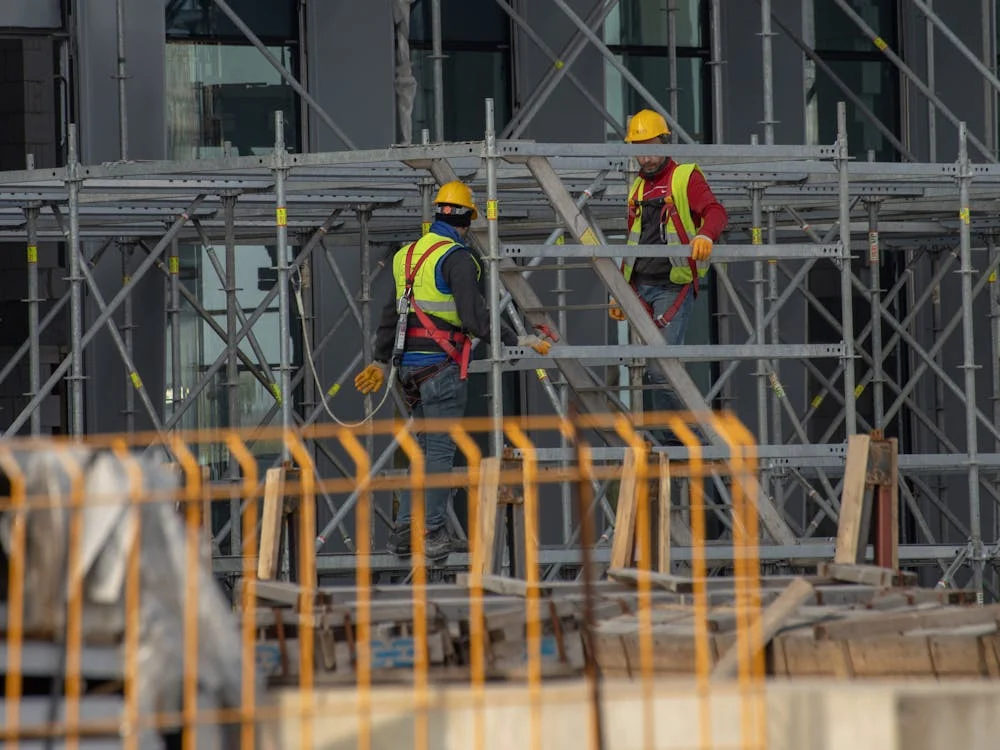Working at height is a high-risk job that exposes the workers to a series of dangers, these dangers include mostly falling from height and falling objects.
These two (2) hazards of working at height could be fatal if not properly managed.
It is on this note that is necessary to understand the dangers of working at height and safety measures to curtail the risks.
We are going to explain the safety measures needed to curtail the dangers of working at height into two segments based on the main dangers:
Working At Height Procedures – Relevant Safety Measures
These safety measures will be grouped concerning the major hazards encountered when working at height.
A. Preventing Falling From Height:
To prevent falling from a height, these safety measures should be adopted.
- Ensure worker’s training: Before any worker is assigned the task of working at height, the worker needs to be properly trained. The training should cover:
- What is working at height
- Dangers of working at a height
- Who should work at a height
- Safety measures to adopt while working at height
- Appropriate use of fall protection and its accessories.
- Different types of body harnesses, and their suitabilities. This will help in the choice of the best body harness for the job; they could need a harness with a single lanyard or a double lanyard.
Professionals trained to assess the specific hazards related to various heights can guide on the best practices. For specialized tasks, such as roofing, seeking the expertise of roofing contractors in Tacoma can provide additional safety assurances. Not only are these professionals trained to work at heights, but they also understand the unique hazards associated with roofing projects.
- Adequate supervision: Working at height is a high-risk task, so it requires close supervision. Even after the necessary training, the workers should be closely supervised to ensure that they are working in compliance with the safety plan for the job.
- Safe access and egress should be ensured: Falling from height does not only happen from the working location, it can also occur while accessing or exiting the working location. Hence, access and egress must be safe as much as reasonably practicable.
- Adequate working platform should be used: Depending on the job, the most suitable working platform should be chosen. For example, it is wrong to use a step ladder while erecting a roofing component at a height where you will need both hands and/or a spanner for tightening; instead, a scaffold or an MEWP (Mobile Elevated Working Platform) should be used. Therefore, in the planning phase of the job, the job location, type of job, etc, should guide us on the best working platform suited for the job.
- Material and equipment inspection: Before the commencement of work at height, all the materials and equipment needed for the job should be inspected by a competent person. These pieces of equipment may include but are not limited to the working platform, the fall protection (Body harness), the safety nets, access [whether ladder, scaffold, or MEWP (mobile working elevated platform)], etc.
B. Preventing Falling Object
One of the dangers of working at height is falling objects. These can affect people working within the area where height work is carried out or people just passing through it. Such a category of people needs to be protected. We can protect them by using these safety measures:
- Segregating the area: The area under which height work is being carried out has to be segregated. Thoroughfare should be suspended within the area till the job is completed. Significantly, the area should be cordoned off.
- Fall net/Debris net should be installed: The fall net or debris net will hold off falling personnel or falling materials, preventing them from falling to other personnel carrying out different tasks underneath them. Where it is not realistic to cordon off the working area, the debris net will help in controlling falling objects. Also, the fall net/debris net should only be installed by a competent person, and tested before use. Drop test or another other form of safety net test can be used. This test is to ascertain that the net is okay for the purpose it is being installed.
Conclusion
Working at height is a high-risk activity and should be treated with caution. You need to ensure that relevant safety measures are followed to stay safe while working at height. This article has given out some vital measures to adopt, follow up, and stay safe.
Related Posts
9 Dreadful Work At Height Hazards And Control Measures
Work At Height Regulation That Enhances Working Safely At Height
Working At Height Risk Assessment
44 Amazing Safety Share Topics for Your Workplace
What is a Safe Working Platform
MEWP Safety: Safety Measures for Mobile Elevated Working Platform

